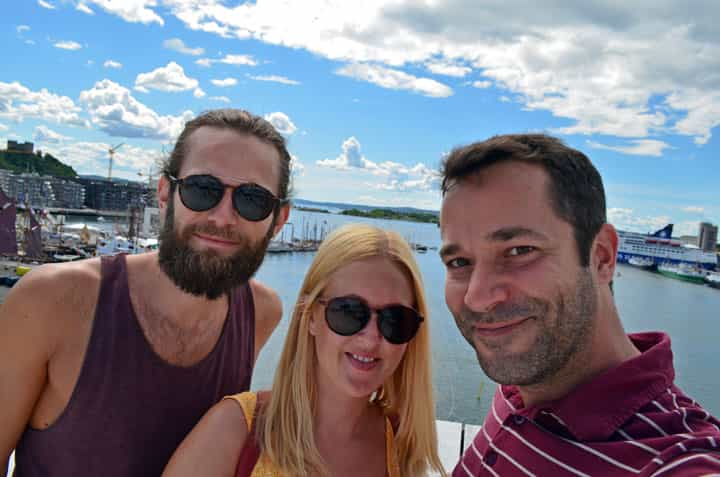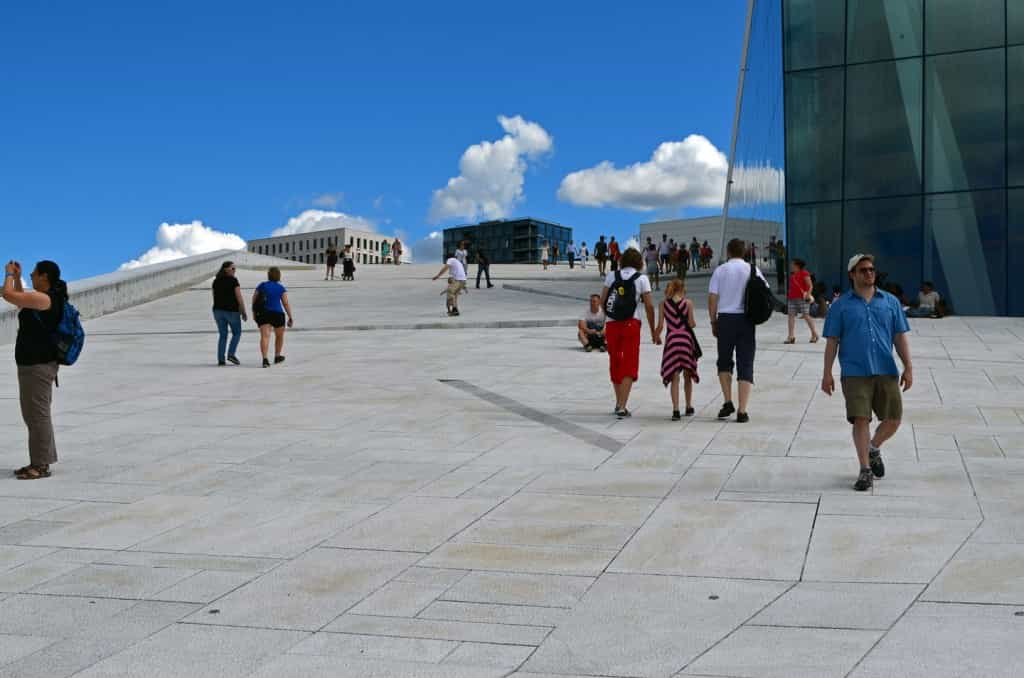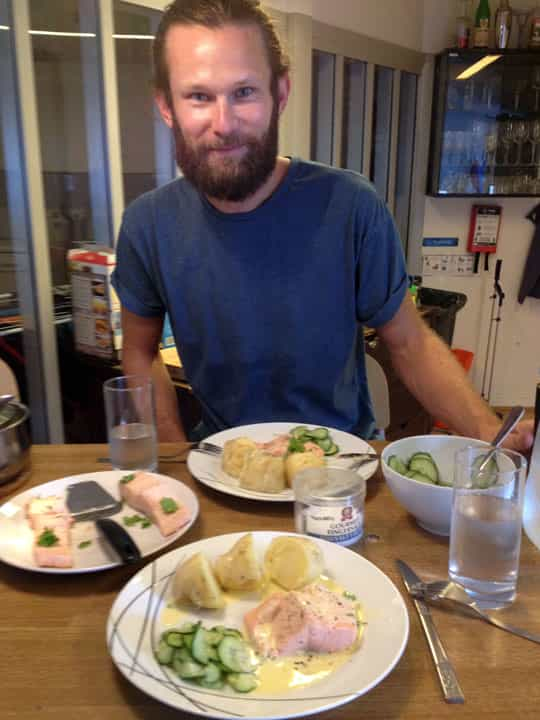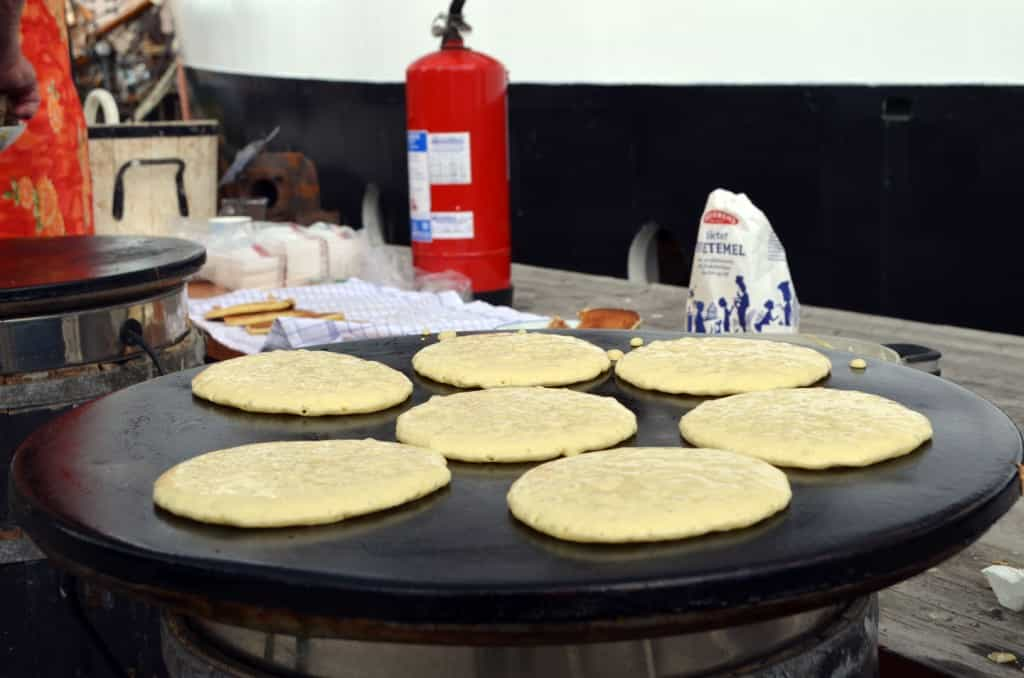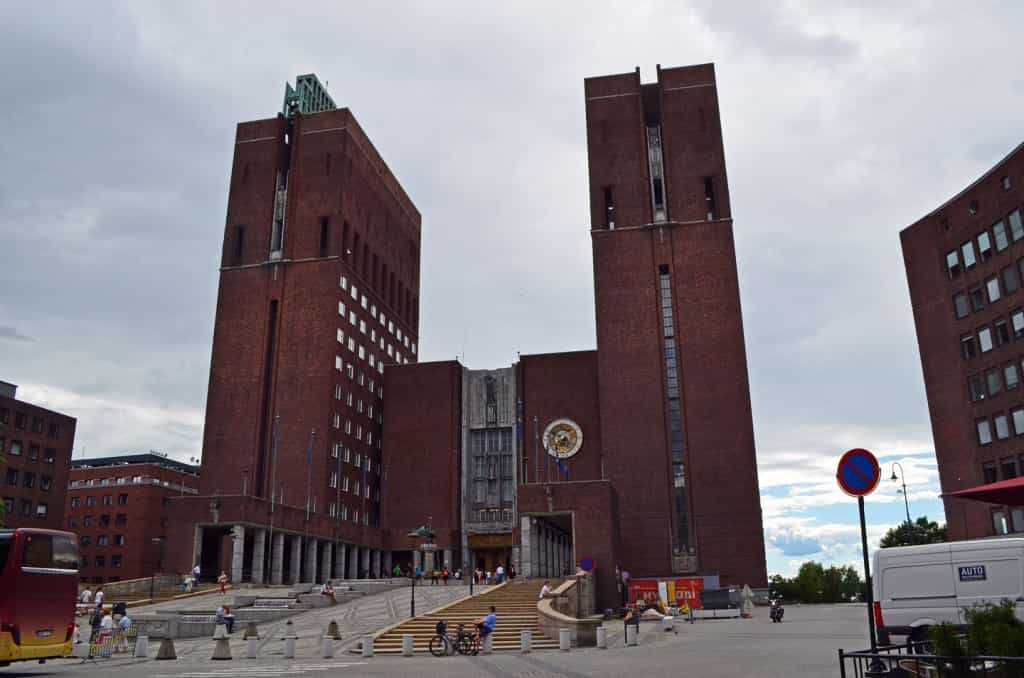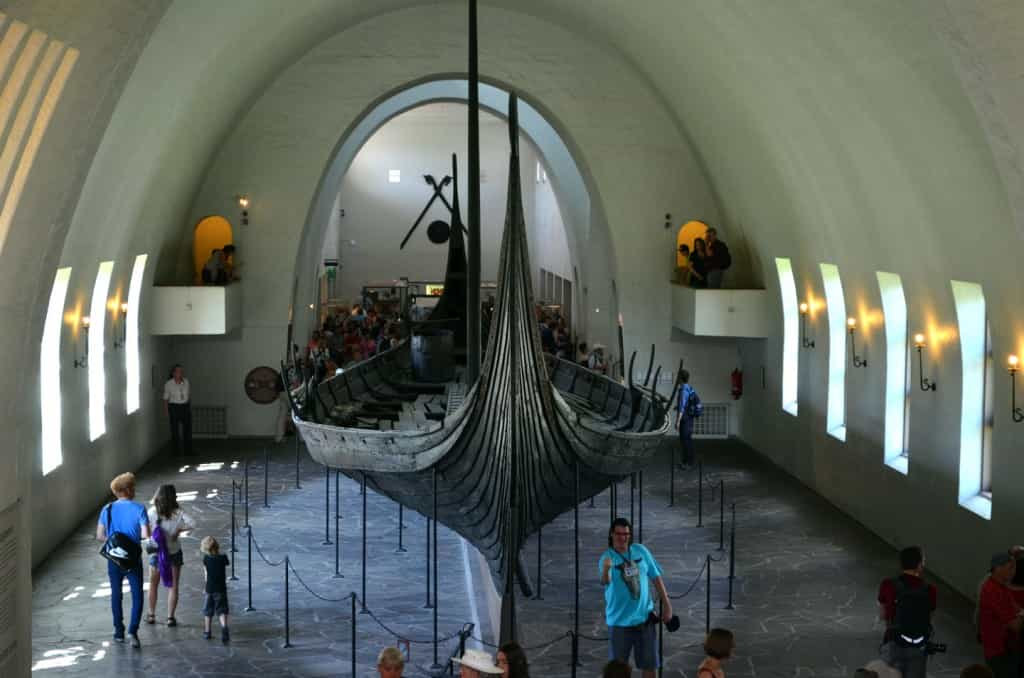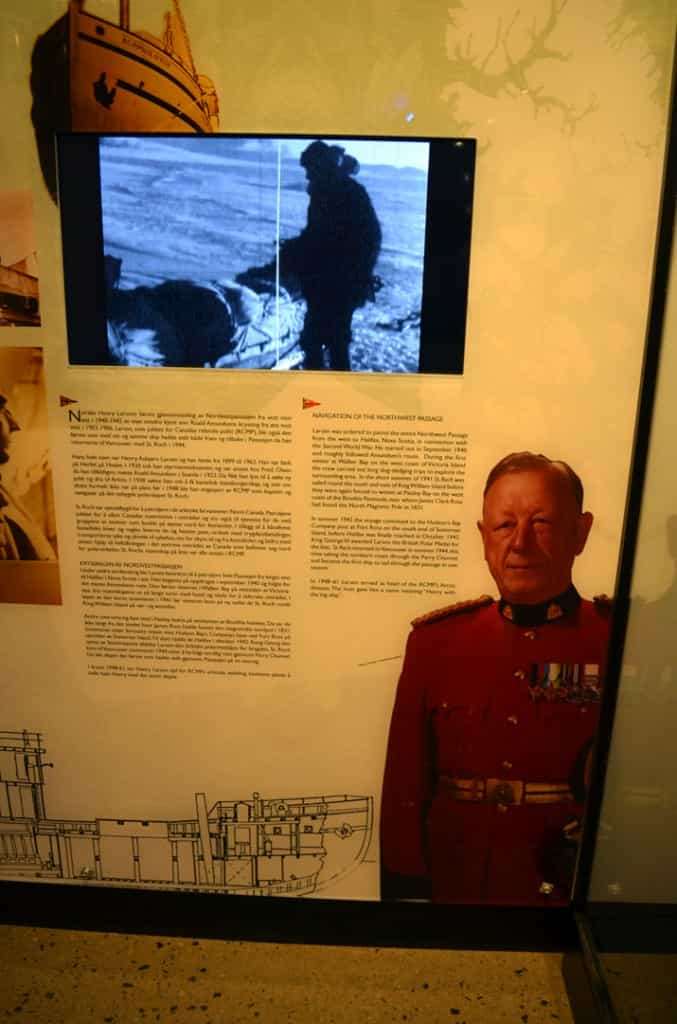The main reason for my visit to Oslo, other than to travel to Longyearbyen, the northernmost town in the world, was to visit my friends Anna and Steinar. I met them last year in Kenya and we travelled together south through Tanzania, Malawi and Zambia.
Today one of the most iconic buildings of Oslo is the Opera House, constructed in 2007, incredibly ahead of schedule and under budget, a concept which is completely unheard of in my home province of Quebec. Even on time and roughly on budget is a completely fictional concept.
Reminiscent of an iceberg, its strange angles make it possible to just walk up on the roof, from which you get a nice view of the city.
Including this section of brand new narrow, modern buildings, nicknamed “the bar code”.
Seeing all the corporate headquarters and offices of Norwegian companies I had never heard of confirmed my image of Norway as a very dynamic, diversified economy, despite the fact that the majority of export revenues come from oil and gas. The country’s sovereign fund, which is now close to a trillion dollars, is enough to make every man, woman and child a millionaire in Kroner (1,000,000 kroner = US$160,000). So Norway could afford to be a lame country like Kuwait, where people hold useless public service jobs that are really glorified welfare with a important sounding title. But Norwegians value productivity and people work hard. This reminded me a lot of tiny, but also super-rich, Liechtenstein.
The new museum of modern art, built on a huge artificial peninsula covered with luxury apartments and shops. Unlike most places in the world, the large marina is not only open to boat owners and it has become a popular spot for locals to go sunbathe on the docks and swim in the not so cold Norwegians waters. We certainly did.
Norwegians like to make up rules, but unlike, say the Germans, they don’t seem that keen on following them. Drinking in parks is not allowed, for example. That stops no one. The funny thing is what you do with empty cans. You just throw them on the grass! Within 2 minutes, a gypsy with a big bag will walk by and pick it up to sell it back to the store.
BBQ in the park is also probably not allowed, but again, no one protested the little disposable BBQ. Living the rebel life. In case you wonder why I was wearing long pants in the park on a super hot day (and hadn’t shaved in 3 days): at this point my suitcase was still stuck in Paris!
Apart from BBQ sausages, I had hamburgers and pizzas in Norway. Steinar told me the national food of Norway is frozen pizza! But he did make me a nice little traditional dish of salmon in a cream sauce with new potatoes and a bitter cucumber salad. Simple yet absolutely delicious. I would say even better than frozen pizza!
For the accompanying wine, one must shop in this place, the Government wine monopoly (beer can be purchased in grocery stores). How one can come to the conclusion that retail of alcohol should be handled by a government agency which will sell it for a lot and close early is beyond my comprehension. And a bigger mystery is why only a few nordic countries have had such a strange idea. As far as I know, there are only 5 countries in the world with such things, Norway, Iceland, Finland, Sweden and Canada (except the province of Alberta). No need to research where the idea came from, as I can safely assume it was invented by the Devil.
Alcohol is not the only expensive thing in Norway, everything is. For the park BBQ and a dinner the next day I bought 18 cans of beer in the store, for $90! (had to buy for 2 days, because most stores are closed on Sunday). Four of us went out to a burger joint where you order at the counter. 4 burgers, 3 french fries, a single Coca-Cola: about $100!
Norway has a strong coffee culture, as indicated by this advertisement for a new product, special milk that foams better to make cappuccinos! When we where in Africa, Steinar mentioned this love of coffee and also told me it could be very expensive in Oslo. I suggested this was because coffee shop workers had high salaries there. He said: “No, most Norwegians don’t want to do this sort of work, so owners hire cheap labor. You know, from Sweden”. (!)
Steinar’s father was involved in a boat festival, so we went. Not a lot of international tourists at this event.
Traditional boat building, subsidized by the Government so that the trade doesn’t die out. I imagine this also guarantee a second option in the future, if the sovereign fund crashes and oil dries out: Norwegians can go back to the pre-1066 days and built boats to invade Scotland!
Traditional singers. I think Justin Bieber got a better crowd for his free Oslo concert.
And according to Steinar, it’s not a real Norwegian festival if there are no pancakes! This was the only time I saw my friends buy something with cash. On arrival in town, I said I needed to go to an ATM and Steinar said he never uses money. It is perfectly normal in Oslo to buy a bottle of water with a credit card (OK, the bottle is probably the equivalent of $5, but still). I found a one Kroner coin on the street, and after a week in Norway, I had not touched another piece of Norwegian money, or spent my Kroner.
Oslo’s massive city hall. I was built a few years after the dissolution of the country’s union with Denmark, and it served to represent, as well as create, a sense of national identity in a country that had been part of Sweden for almost a century, and before that part of Denmark for 436 years.
You may recognize the great hall, where the Nobel Peace Prize is presented annually to people who have “done the most or the best work for fraternity between nations, for the abolition or reduction of standing armies and for the holding and promotion of peace congresses.” You know, like Al Gore. The walls are covered by mural paintings depicting Norwegian history and accomplishments.
Outside, carvings representing Norse mythology. Here the three valkyries who chose the warriors destined to fall in battle transform from swans into maidens and marry three men, before disappearing again after 7 years.
One of them was Volund the smith. You might imagine him in a happy family setting, until you notice the chains. Norse mythology is not always happy happy. The caption:
“Volund the smith has vengeful thoughts. The evil and greedy King Nidud captures Volund, severs his hamstrings and orders him to forge costly jewellery on a deserted island. The King has stolen a ring from Volund and given it to his own daughter Bodvil. Now the ring is broken in two, and Bodvil secretly travels to meet Volund in order to have it forged into one whole ring again. The King’s two sons are tempted to the island by all the gold the smith has.
Volund cuts off the boy’s heads, mounts their skulls in silver and sends them to King Nidud as drinking vessels. From their teeth he makes a brooch to Bodvil, and he mounts their eyeballs as precious stones in a piece of jewellery for the Queen. Finally, he rapes Bodvil and she becomes pregnant with his child.”
That’s the end of the story, good night children and sweet dreams! Anyway, much less boring than semitic religions that have no good stories (except Moses parting the seas – that a good one.)
As a sailing nation, not surprising that Oslo has three maritime museums. I visited two. The viking ship museum, which houses four ships found underground, as it was customary to bury important men in a ship, with various possessions. Their discovery was very important for historians studying the viking era, despite the fact that the tombs contained no jewellery or weapons, having been looted centuries ago.
The level of intricacy was far higher than I would have expected of the vikings. Unfortunately, a hundred years ago Norwegians preserved the pieces using the best technology of the time, but today they are all slowly rotting from the inside and so far, no solution has been found to stop the process.
The other museum I visited houses the Fram, the ship which was used for Fridtjof Nansen’s 1893 polar expedition. The idea was to deliberately get the ship caught in ice, and then let it drift with the polar ice cap until the North Pole. While they didn’t reach the pole, they did go past the 85th parallel, a incredible feat at the time. The “sailing” lasted an incredible three years!
And did I mention the ship was made of wood! OK, a 1.5 m thick oak hull, but still, complete insanity in the 19th century.
And finally, a piece of the norwegian-canadian history: the first man to sail the North-West passage in both directions was a norwegian immigrant who became the Royal Canadian Mounted Police’s Commissioner for the Arctic, Henry Asbjørn Larsen.
And that’s my last post from Norway. Tomorrow, a story of some incredible travellers I met in Germany.
#Norway






















